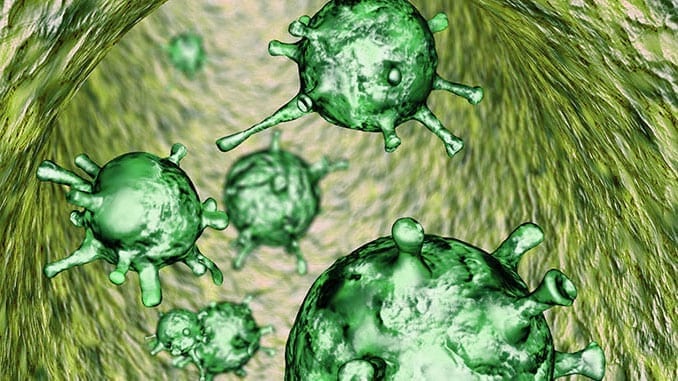Two leading influenza experts from the National Institute of Allergy and Infectious Diseases (NIAID) have published new commentary on how the evolution of proteins found on the surfaces of flu viruses has impacted their ability to infect migratory birds and poultry and cause avian disease.
The article was co-authored by Jeffery Taubenberger, Ph.D., chief of the Viral Pathogenesis and Evolution section of NIAID’s Laboratory of Infectious Diseases, and David Morens, M.D., a senior advisor to the NIAID Director.
The lineage of H5N1, a virus that first gained notoriety in 1977 for killing poultry (and, rarely, humans) and a new group of avian influenza virus called H5Nx both display a binding protein called hemagglutinin 5 (H5) on their surfaces, along with varieties of neuraminidase (N). N is a protein that allows new flu viruses to exit their host cell and infect other cells.
These H5-containing viruses have spread widely around the globe through populations of migratory wild birds. The viruses rarely jump from birds to humans but still can be destructive; H5N8 avian influenza, for example, caused more than $5 billion in poultry losses in the United States in 2015.
New research by Guo et al., which appears in the same issue of Emerging Infectious Diseases, suggests that the H5 in the new H5Nx viruses may confer an evolutionary advantage.
The scientists, from Utrecht University in the Netherlands and the Scripps Research Institute in La Jolla, California, found that as a particular strain of highly pathogenic H5 avian influenza emerged in chickens, it acquired mutations that changed the structure of the hemagglutinin on its surface.
According to Drs. Taubenberger and Morens, this change allowed the hemagglutinin to bind to additional cell receptors in its avian host, which the virus previously could not infect, while also retaining its original binding abilities. This versatility likely made it easier for the virus to infect new hosts, the authors write. They speculate that similar mutations may have played a key role in allowing other strains of H5Nx viruses to spread more rapidly around the globe.
Fortunately, this adaptation that allows the H5Nx viruses to more readily infect a variety of birds may also render them less able to spread to humans, the NIAID authors write. However, if humans and other mammals have previously undiscovered binding sites for this new variety of H5 in their respiratory tracts, according to the authors, H5Nx viruses may eventually be able to evolve to infect people.
Read more: H5Nx panzootic bird flu—Influenza’s newest worldwide evolutionary tour.


